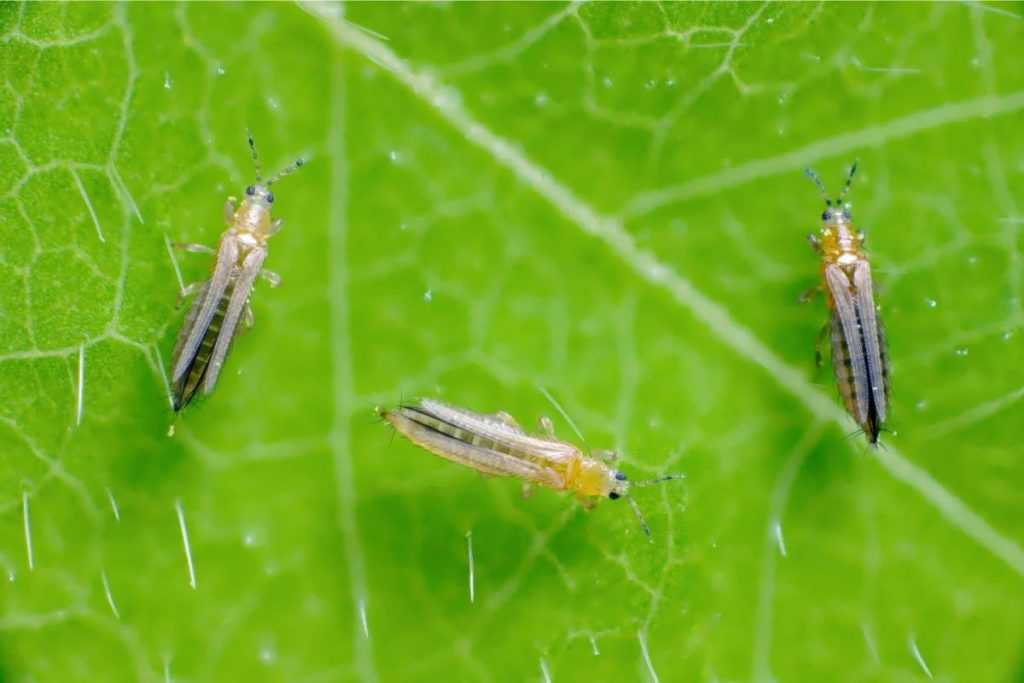
Thrips are tiny, slender insects with fringed wings that feed by puncturing plant tissues and sucking out cell sap. They belong to the order Thysanoptera. The Western flower thrips (Frankliniella occidentalis) is the most common species found in greenhouse-grown roses and summer flowers.
Identification and Damage
Western flower thrips primarily target herbaceous ornamentals, especially rose plants. These pests cause visible damage by stippling, scarring, and streaking petals, leaves, and other plant parts. Adult thrips are brownish to black with thick, bristle-like hairs at the tip of the abdomen, which extends beyond their wing tips when at rest. The larvae appear yellow to orange.
Affected flower buds may become deformed or fail to open, while petals can develop brown streaks and black spots. Young leaves might display tiny scars, curl back, or appear distorted. In severe cases, plant growth may be stunted.
Life Cycle
The thrips life cycle includes several stages:
- Egg: Laid inside flower buds.
- Larval Stages (1st and 2nd instars): Actively feed on buds and other plant tissues.
- Propupa and Pupa: Non-feeding stages, usually occurring in soil or leaf litter.
- Adult: Return to plants to feed and lay eggs.
Under ideal conditions, this cycle takes about two weeks to complete.
Favorable Conditions
Thrips populations increase rapidly in hot, dry, dusty, and windy weather. Poor greenhouse sanitation, such as the presence of fallen leaves, open flowers, weeds, and plant debris, can worsen infestations. Surrounding weeds and flowering shrubs also serve as alternate host plants.
Management and Control
Monitoring
Early detection is crucial. Use sticky traps and regular scouting to monitor thrips populations. The appearance of even a single adult should prompt immediate action before egg-laying begins.
Cultural Practices
- Remove fallen leaves and plant debris where thrips pupate.
- Eliminate weeds and alternate host plants near production areas.
- Discard infested flower buds and plant parts in designated disposal areas.
- Remove open flowers that might attract adults.
- Shower plants with water to reduce temperatures and dislodge insects.
- Knock buds in the morning and cut stems in the evening for added control.
Chemical Control
Apply insecticides at the first sign of damage or during weather conditions favorable to thrips activity. Select appropriate products and ensure proper mixing. Lightly showering plants before application can improve chemical contact and effectiveness. In cases of severe infestations, apply treatments to the soil or growing media to target the pupal stage. Ensure the media is adequately moistened to allow effective chemical penetration.
